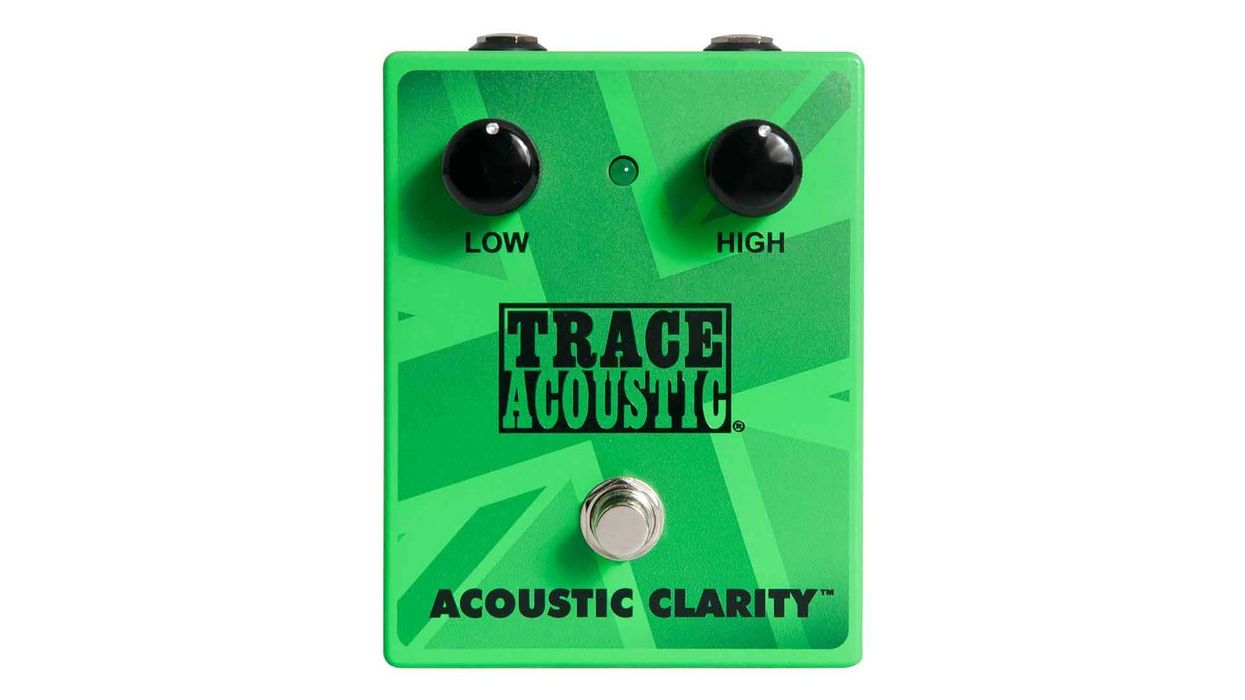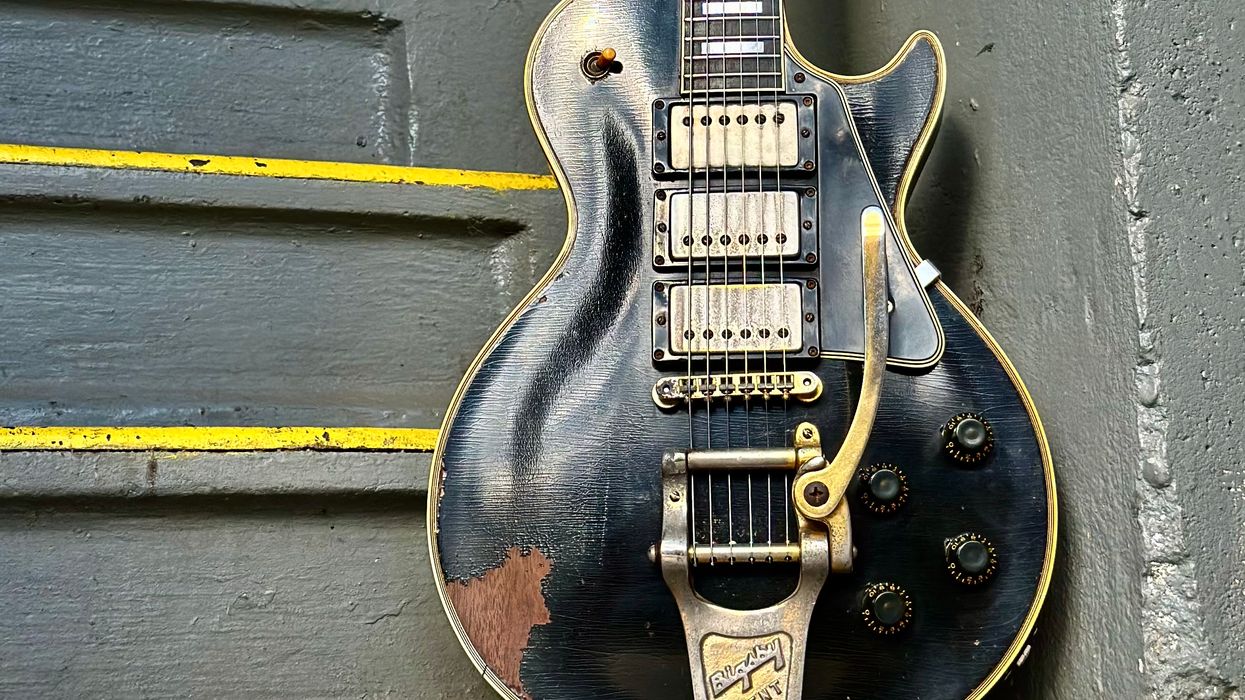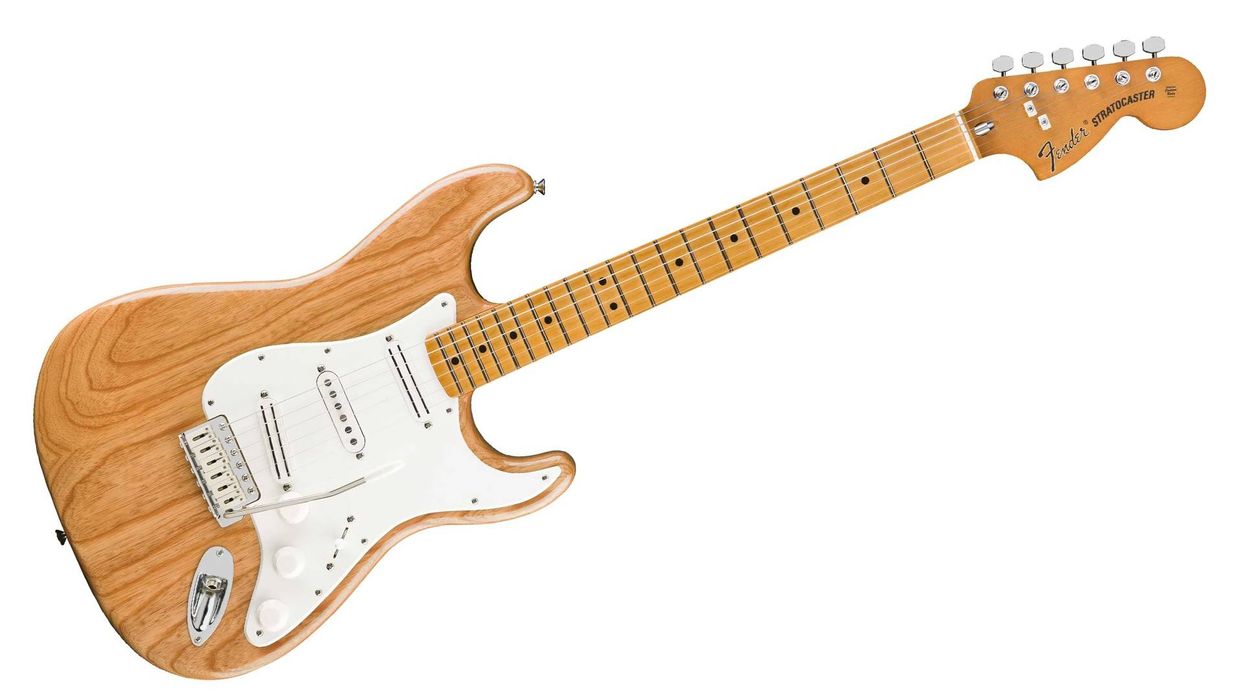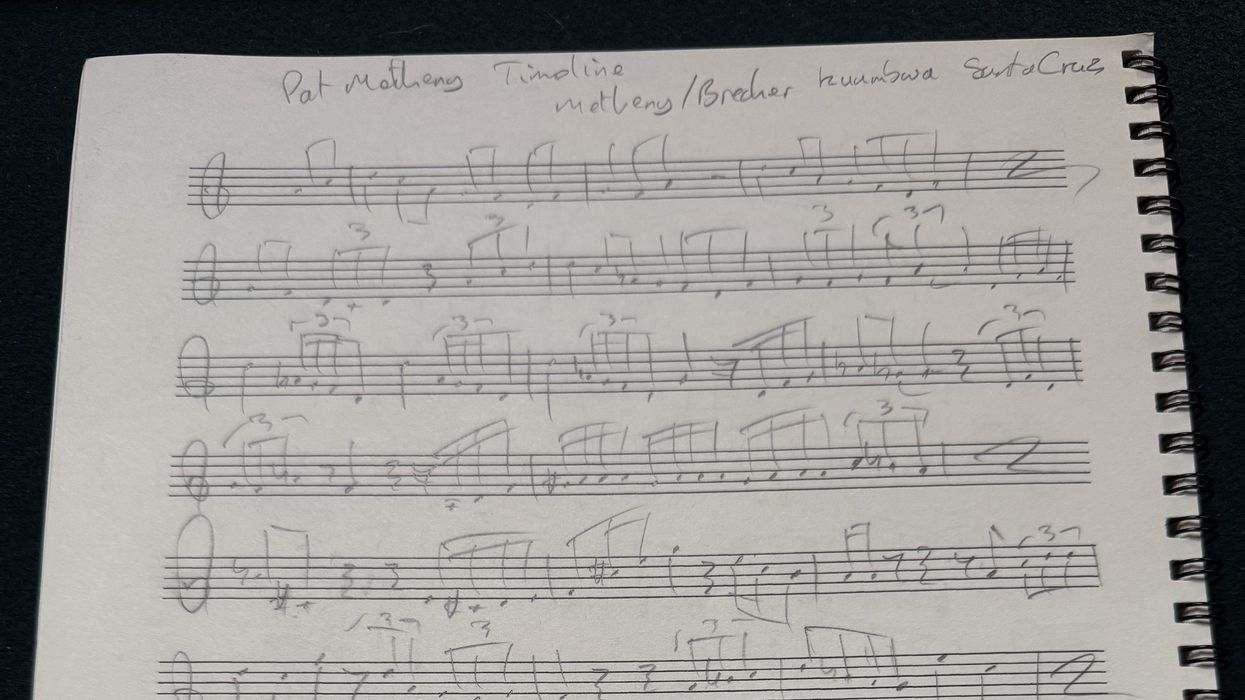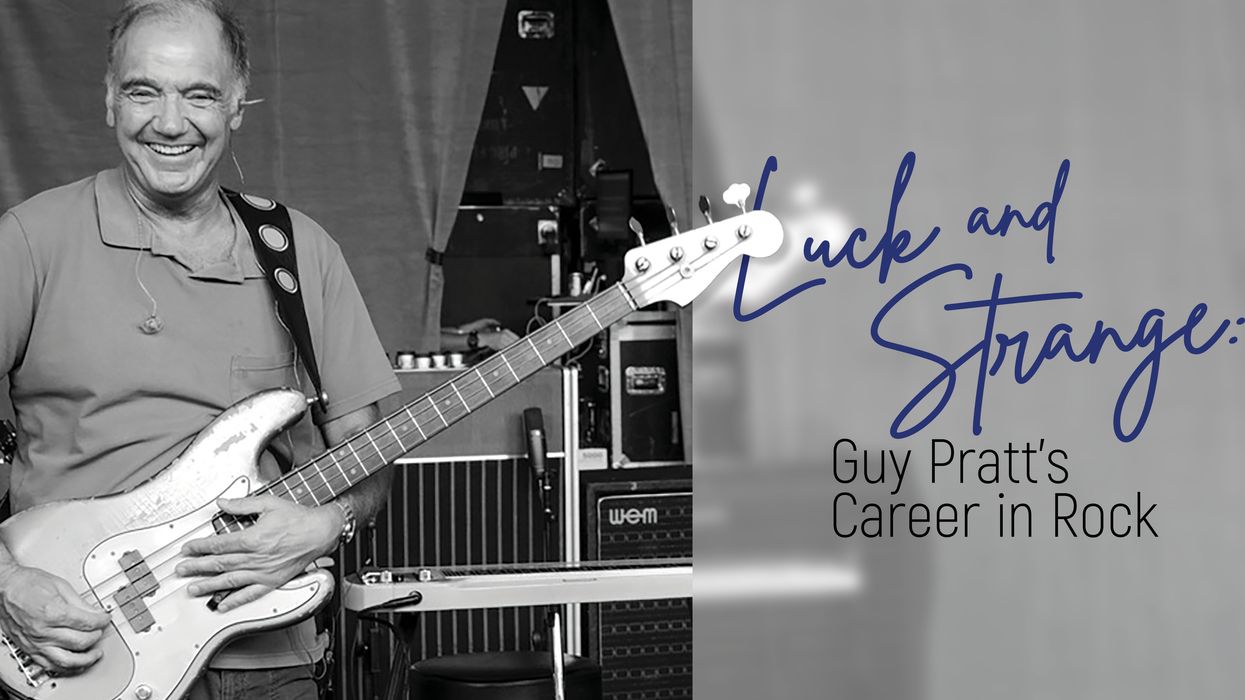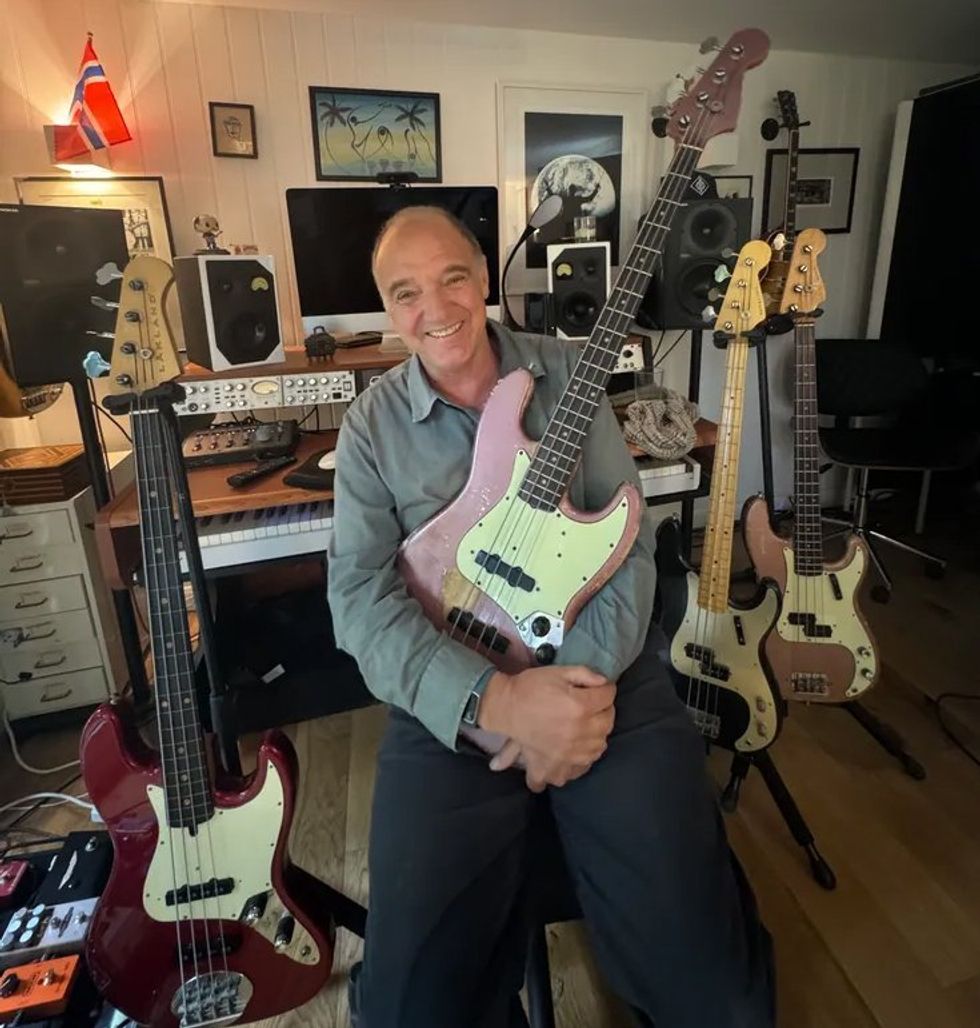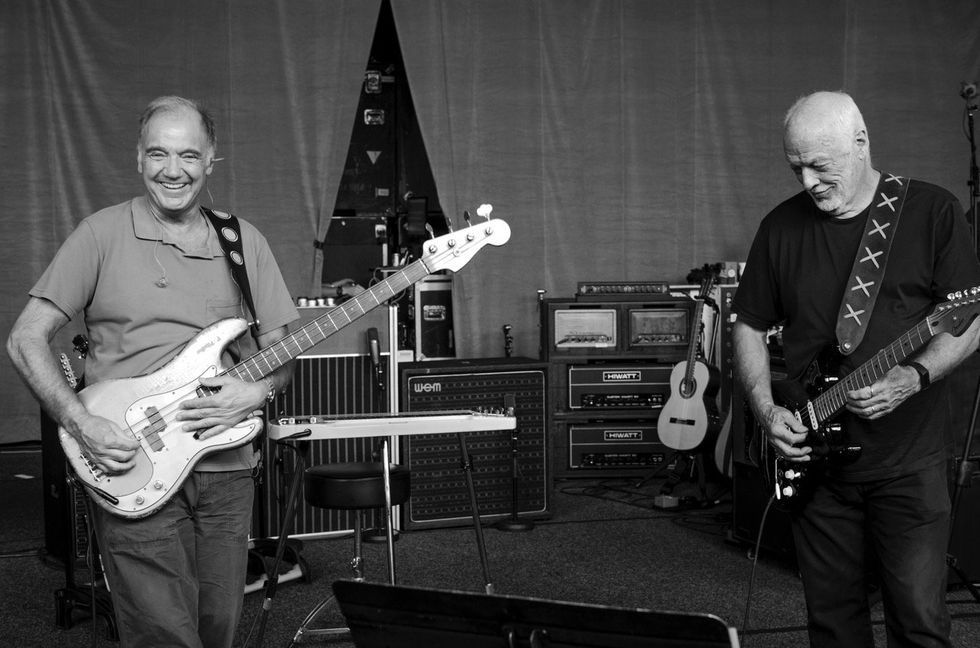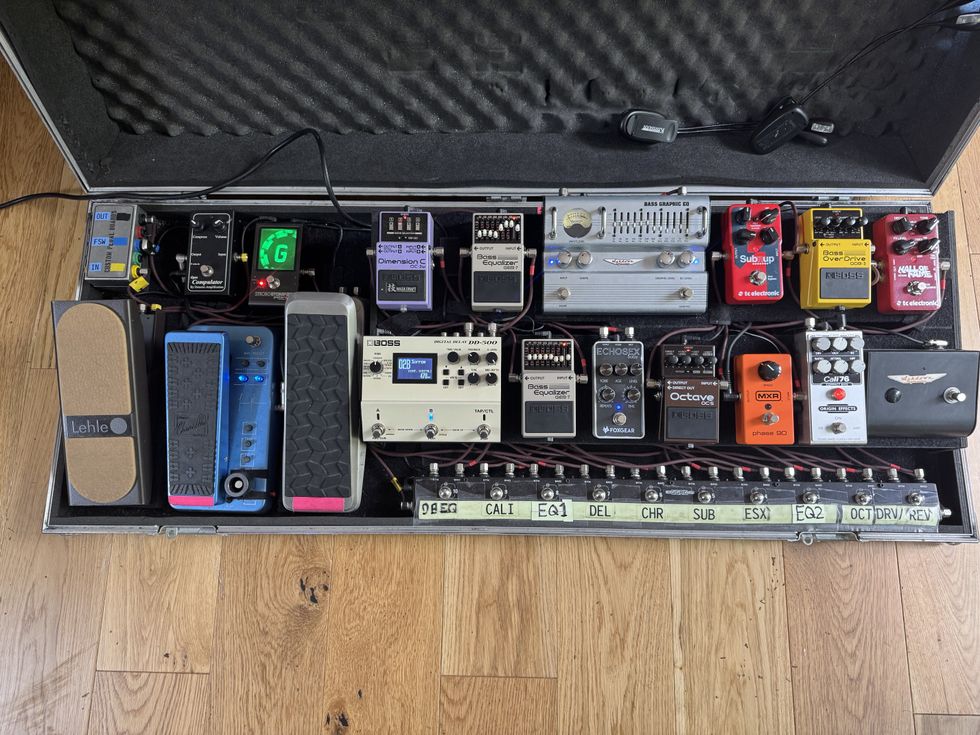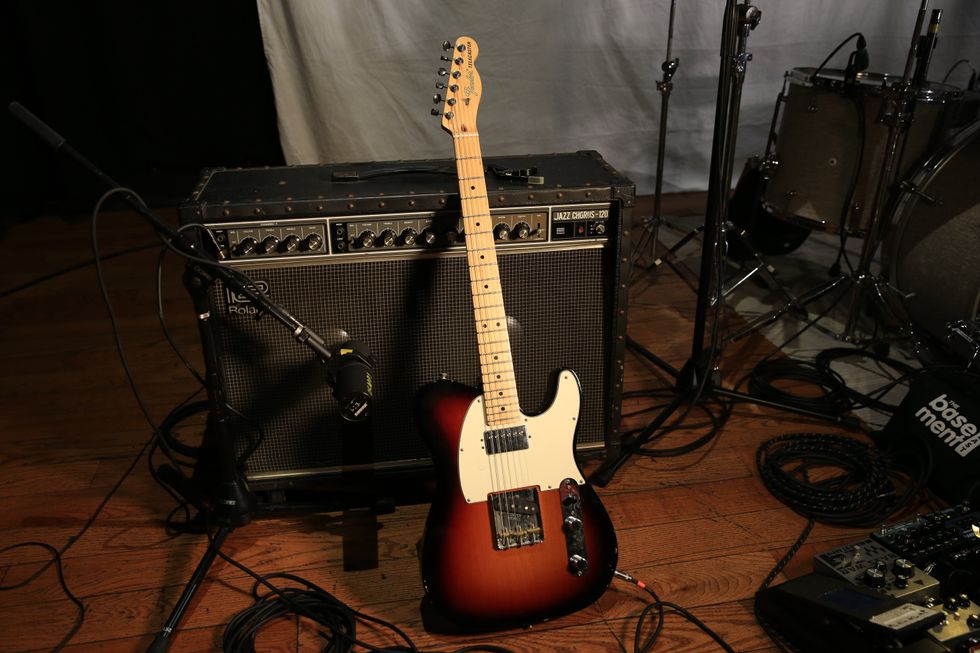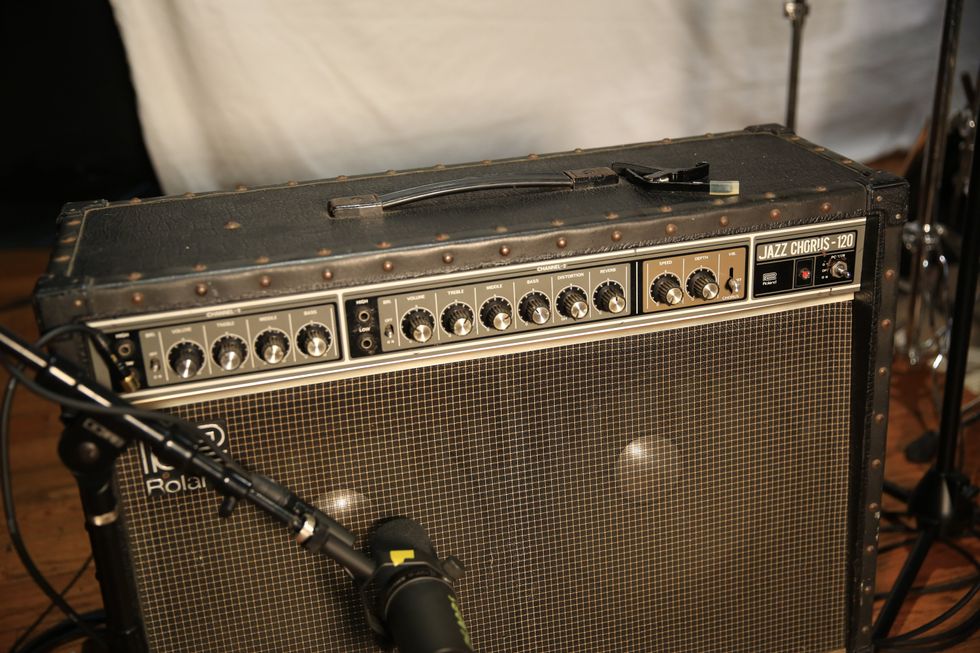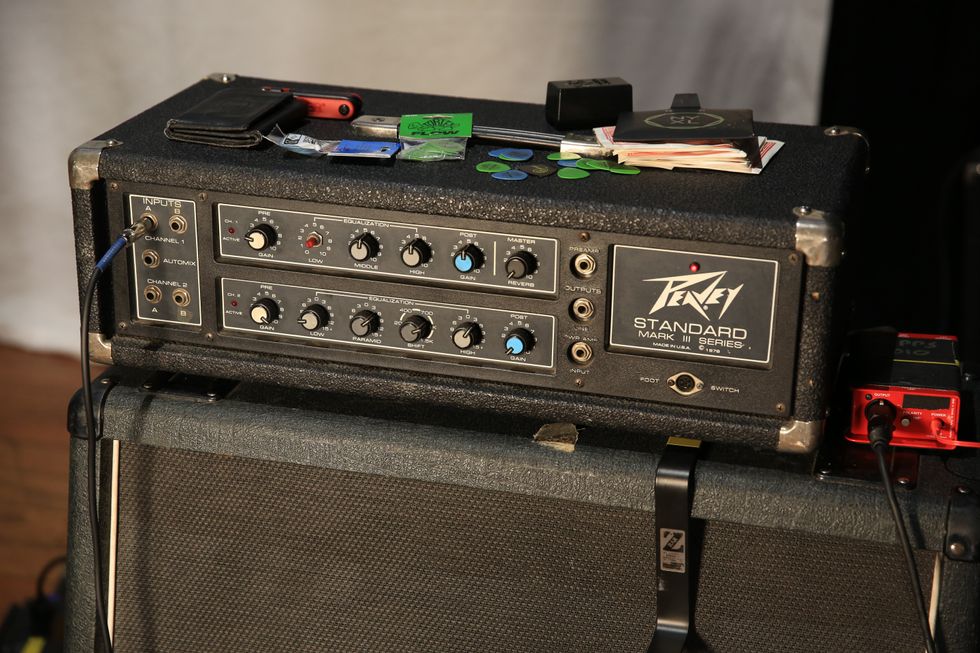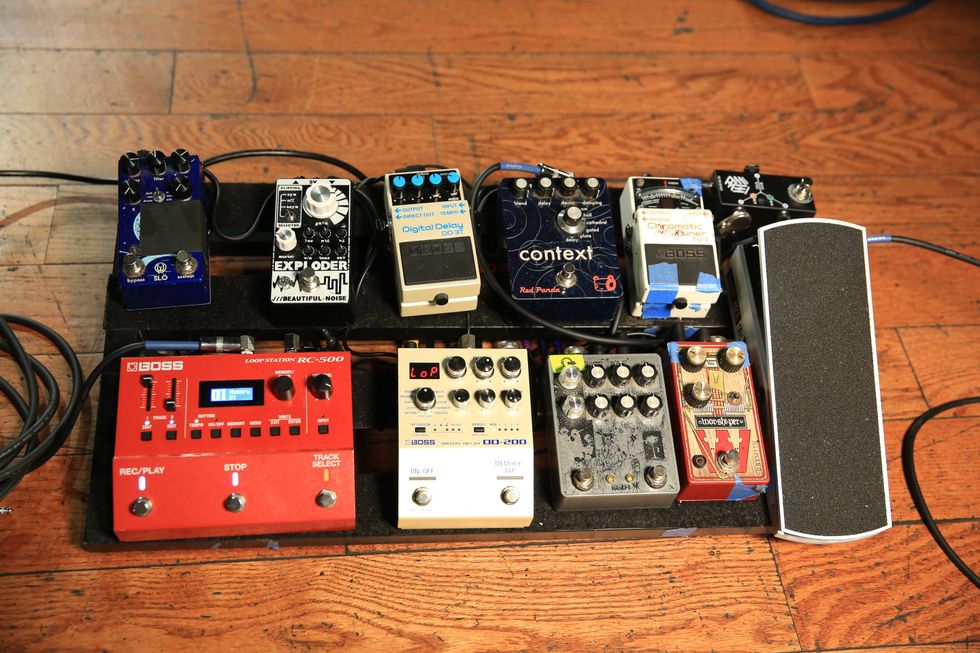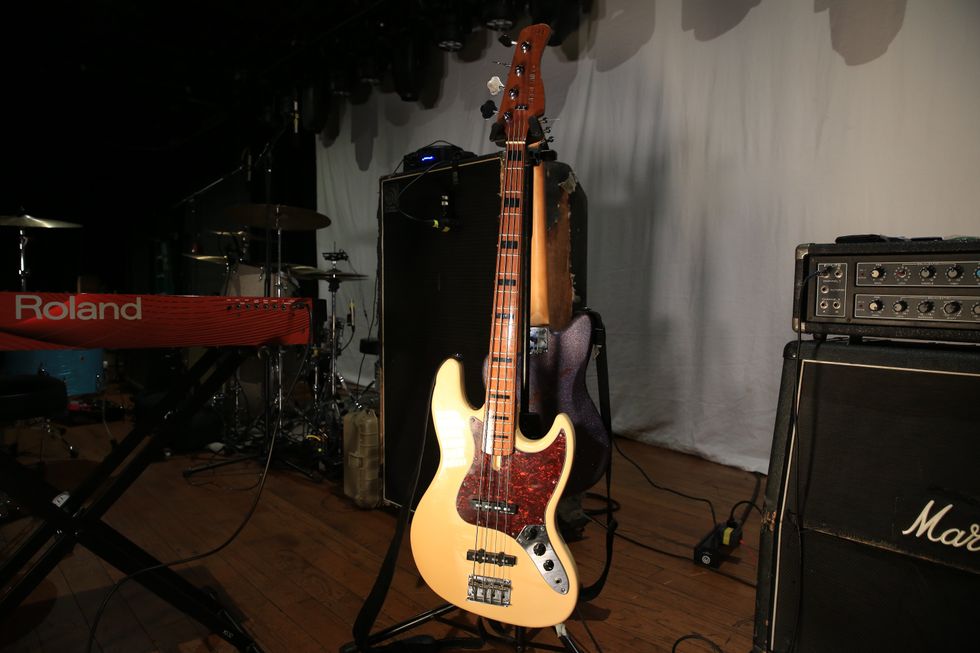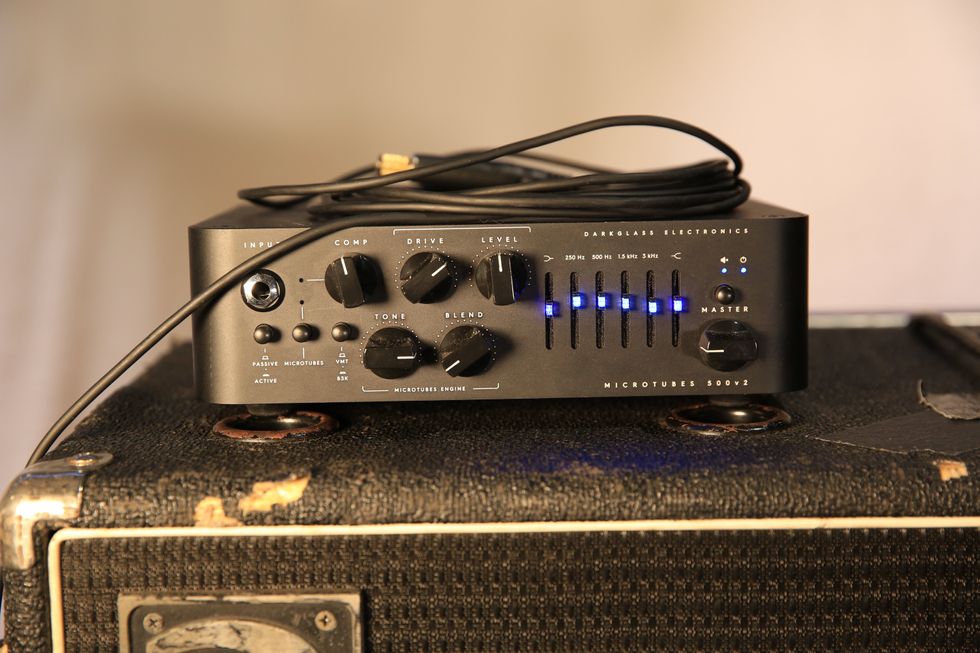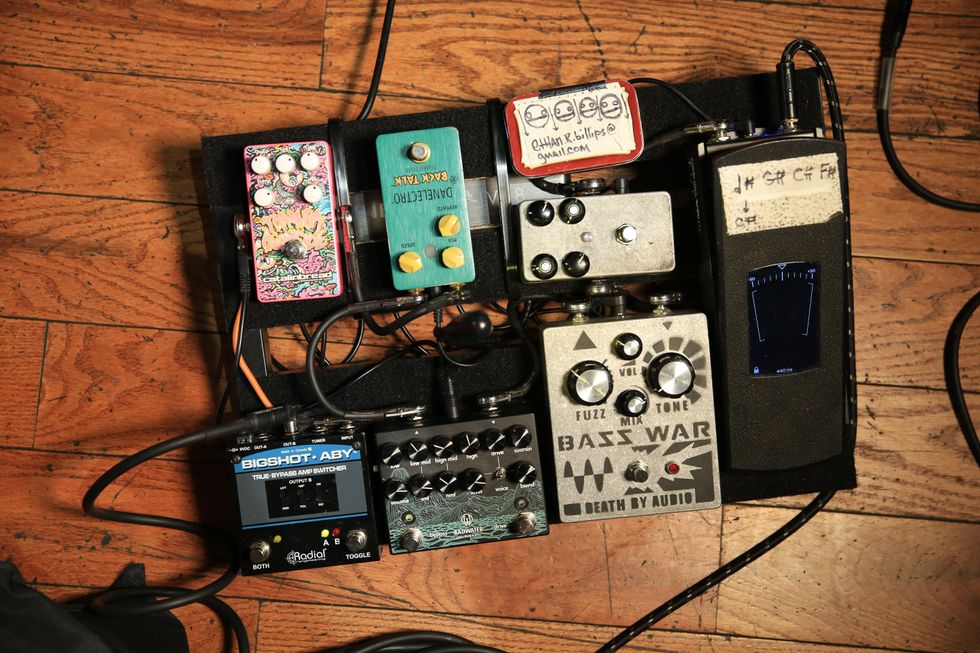Clip 1 - Fender American Standard Jazz Bass: Slight mid boost. Riff played on both pickups, then neck pickup, followed by bridge pickup.
Clip 2 - Nash P-style: Flat EQ. Riff is played without Vintage switch engaged, and then played again with Vintage switch engaged.
How would you like to sound like Matt Garrison? Or Ron Carter? Well, that’s a tall order, but you can employ the equipment used by Garrison and Carter to make a best attempt at replicating their signature sounds. For a number of years now, their instruments—and those of other top bassists—have been plugged into Epifani amplification. Long recognized for excellence in cabinet design, Nick Epifani and his team have developed a number of products that cater to players who are serious about their sound and appreciate straightforward features in a portable package. The company’s latest amplifier, the Piccolo 999, borrows characteristics from their popular Piccolo 600, but boosts the power to a massive 1,000 watts.
The Number of the Beast
While the Piccolo moniker is befitting for the 4 1/2-pound class-D amp (piccolo is Italian for small), it contains full-bodied features and big power. The front panel lays out the necessities for tone sculpting, including a gain section that’s tied to an active/passive switch to optimize a variety of bass pickups. Neighboring the gain is a mid-cut dial and an adjacent mid-cut activation switch, which provides up to -8 dB at 800 Hz. Bassists will find the mid-cut section handy when seeking classic slap-and-pop timbres, or mellowing out the harsh mids that some upright pickups produce.
To the right of the master volume (the large, guitar-pick-shaped dial with an Art Deco-esque “E” in the middle) lies the EQ section. Despite the section’s simplicity, the bass, mid, and treble controls are expertly voiced for quick tone-shaping with significant shelving capabilities. Below the trio of tone controls is a switch for the company’s proprietary vintage circuit, which Epifani contends will adjust the frequencies of the amp to replicate the timbres of classic bass amplifiers.
The rear panel contains an effects loop with a mix control, a tuner out, pedal input, and a DI section. The Piccolo 999 component set makes it clear that Epifani understands the needs of the working bassist. Only the essentials are packed into this pint-sized powerhouse.
Italian Stallion
I ran the Piccolo 999 up against two of Epifani’s other designs—a Piccolo 600 and a UL 501—with each amp plugged into an Epifani UL3 112 cabinet. As I listened for differences between the rigs, I alternated between a Fender American Standard Jazz and an F Bass BN6.
All three elicited pleasing tones, but the Piccolo 999 stood out with its responsive delivery of each note by conveying tight lows, clean top-end, and punchy, aggressive midrange. This is not to say the mids were harsh, but both basses produced an authoritative voice in that region. Historically, Epifani’s wares have been known for quick tonal transmission, and I was impressed by how the 999 actually improved on sonic sensitivity. As a result of this responsiveness, I could play with a lighter touch and serve up dynamic, articulated lines—all while maintaining a consistent low-end foundation.
Ratings
Pros:
Punchy, responsive amplifier with clean tone and easy-to-use features. Portable design.
Cons:
Fan a tad noisy.
Tones:
Ease of Use:
Build/Design:
Value:
Street:
$1,199
Epifani Piccolo 999
epifani.com
I’ve long been impressed with the capabilities of Epifani’s mid-cut circuitry—particularly when using an upright bass or EUB. Epifani has voiced this dial to near perfection by providing the means to scoop out the artificial-sounding honks and clacks of upright pickups. Not only does this bring the woody character back to amplified uprights, but it assists in creating a pleasing replication of an upright sound from EUBs.
Another key ingredient to the Epifani sound is characteristically clean tones, and the Piccolo 999 continues in this tradition. I realized this when I took the amp (along with two UL3 112s) to different stages, and split time between a Nash P-style bass, an F Bass BN6, and the aforementioned Jazz bass. The Epifani rig loved bridge-pickup sounds, and with a slight boost of the mid and bass EQ dials, I conjured up a beefy, barky tone that delivered 16th-note lines ideal for a jazz/fusion setting.
When it was time to transition to the Nash for a Motown-tribute show, the Epifani rig nicely presented what the warm P-style bass had to offer and allowed me to attempt my best James Jamerson and Bob Babbitt impressions. I did try using the vintage switch during this show, but I felt it took away a bit too much of the midrange information that the rig was expertly delivering. In fact, the Piccolo 999 sounded great in its flat setting, and I could simply adjust the tone control on my bass to temper the amount of presence.
When it came to high-end content, the Epifani turned my F Bass BN6 into a slap machine at a contemporary church service. A slight boost in the treble EQ gave pops a killer modern zing and fingerstyle passages plenty of edge to cut through a powerful choir. It should also be mentioned that the Piccolo 999 handled the 6th string with ease, and punched the congregation in the gut with bowel-shaking bass notes.
The Verdict
Epifani’s Piccolo 999 is like the ideal boxer: powerful, quick, and agile around the musical ring. It preserves the best of Epifani’s past, but serves up enhanced performance and portability. Its fan might be a little loud for recording environments, but this little monster can kick ass onstage. If you want a no-nonsense amp that treats the inherent sound of your instruments with the utmost respect, the Piccolo 999 is a contender in that regard and worthy of some of your own time in the ring.
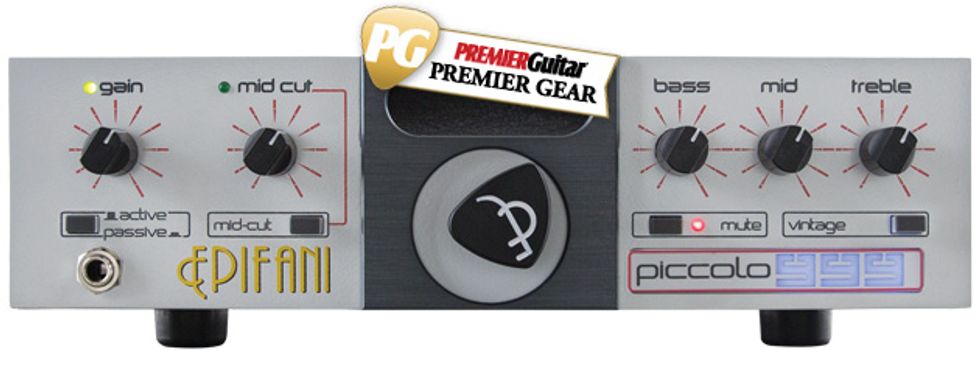



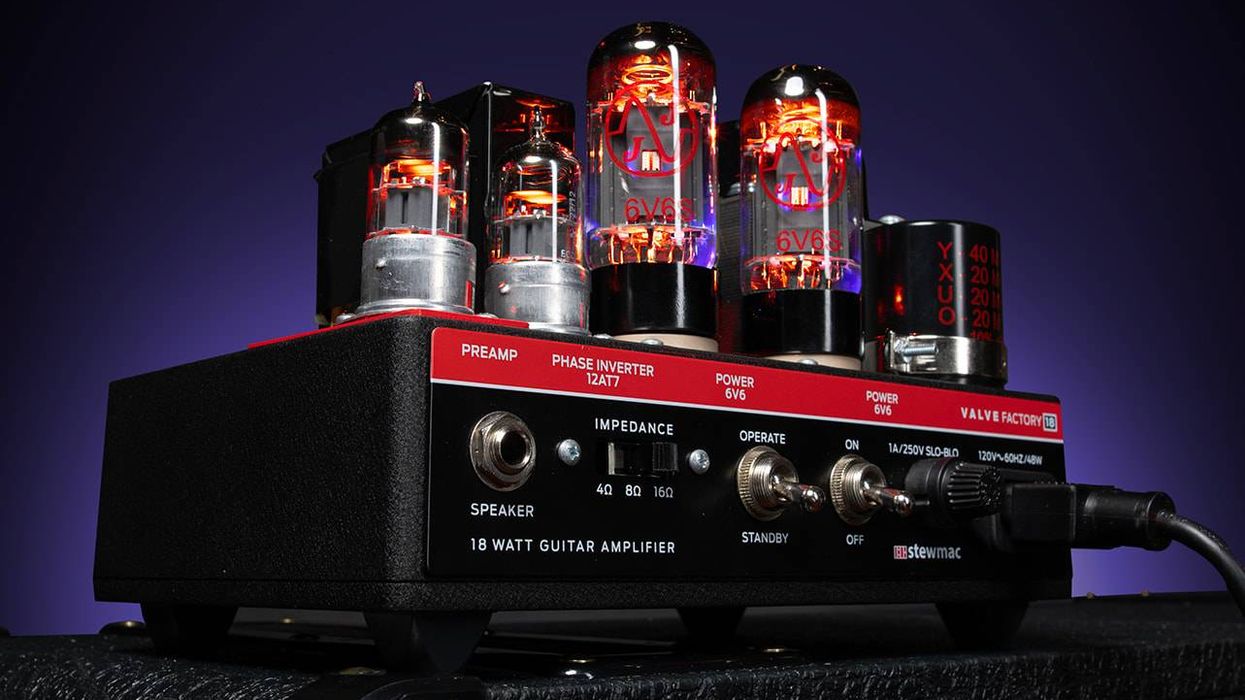


![Rig Rundown: AFI [2025]](https://www.premierguitar.com/media-library/youtube.jpg?id=62064741&width=1245&height=700&quality=70&coordinates=0%2C0%2C0%2C0)












 Shop Scott's Rig
Shop Scott's Rig